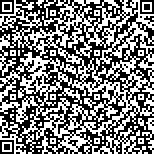| 引用本文: |
符浩楠, 赵永烈, 刘雪颖, 袁惠民, 温碧红.从朱丹溪对“左右”阐释的差异探讨偏头痛的理论内涵及治疗策略[J].湖南中医药大学学报,2024,44(11):2095-2101[点击复制] |
|
| |
|
|
| 本文已被:浏览 1521次 下载 788次 |
| 从朱丹溪对“左右”阐释的差异探讨偏头痛的理论内涵及治疗策略 |
| 符浩楠,赵永烈,刘雪颖,袁惠民,温碧红 |
| (北京中医药大学第三附属医院, 北京 100020) |
| 摘要: |
| 基于朱丹溪“在左属风,在右属痰”对偏头痛治疗的阐述,结合古人从“左右”到“东西”再到“肝肺”认识的发展以及朱丹溪“相火论”“阳常有余,阴常不足”“气有余便是火”的理论思想,认为偏头痛疾病的核心病机为“肝血肺气的失常”。左侧偏头痛发病的机制为相火妄动,血热上炎,风邪相引;肝血渐耗,血虚不荣,脑络空虚。右侧偏头痛发病的机制为气余壅塞,郁而化火,火热上炎;肺失健运,痰郁于脾,经脉阻滞。治法为散补肝血,降利肺气。根据情况的不同予以薄荷、荆芥散风寒血热,当归、川芎温养肝血,黄芩清泻肺火,苍术、半夏化痰利气。并根据人体左右的不对称性,及发病时不同的治疗策略,提出经脉不对称运行的理论,头部左侧由上升的肝气主之,头部右侧由下降的肺气主之。基于此运行模式,在临床上可通过偏头痛左右发作的情况对头痛的深浅、所累积脏腑及用药选择有所判断。综上可知,偏头痛“左右”发病的差异对于在诊断与治疗上的指导作用,可为中医临床提供更多的思路。 |
| 关键词: 偏头痛 左右 肝血肺气 经脉不对称运行 朱丹溪 相火论 阳常有余,阴常不足 气有余便是火 |
| DOI:10.3969/j.issn.1674-070X.2024.11.023 |
| 投稿时间:2024-01-25 |
| 基金项目:国家自然科学基金项目(81873256);国家重点研发计划项目(2019YFC1709702);北京市中医药科技发展资金项目(JJ-2020-36)。 |
|
| Theoretical connotation and therapeutic strategies of migraine from the perspective of ZHU Danxi's Differentiation of "left and right" |
| FU Haonan, ZHAO Yonglie, LIU Xueying, YUAN Huimin, WEN Bihong |
| (The Third Affiliated Hospital of Beijing University of Chinese Medicine, Beijing 100020, China) |
| Abstract: |
| Based on Zhu Danxi's elaboration on treating migraine, which posits that "the left side is related to wind, and the right side to phlegm", combining the ancient understanding progression from "left and right" to "east and west" and further to "liver and lung", along with ZHU Danxi's theoretical ideas of "ministerial fire", "yang is often excessive, while yin is often insufficient", and "when qi is in excess, it transforms into fire", it is believed that the core pathogenesis of migraine lies in the "dysfunction of liver blood and lung qi". The pathogenesis of left-sided migraine involves reckless stirring of ministerial fire, upward flaming of blood heat, and the combination with pathogenic wind; or gradual consumption of liver blood, failure of deficient blood to nourish, and emptiness of the cerebral vessels. The pathogenesis of right-sided migraine includes that excessive qi leads to stagnation, which subsequently transforms into fire, resulting in the upward flaming of fire-heat; or malfunction of the lung leads to accumulation of phlegm in the spleen, obstructing the meridians. Therefore, the therapeutic methods focus on dispersing and replenishing liver blood, while descending and clearing lung qi. Depending on the situation, herbs such as Bohe (Menthae Haplocalycis Herba) and Jingjie (Schizonepetae Herba) are used to disperse wind-cold and clear blood heat, Danggui (Angelicae Sinensis Radix) and Chuanxiong (Chuanxiong Rhizoma) to warm and nourish liver blood, Huangqin (Scutellariae Radix) to clear lung fire, and Cangzhu (Atractylodis Rhizoma) and Banxia (Pinelliae Rhizoma) to resolve phlegm and circulate qi. Additionally, based on the asymmetry of the human body and different therapeutic strategies during onset, the theory of asymmetric running of meridians is proposed, wherein the left side of the head is governed by ascending liver qi, while the right side by descending lung qi. Guided by this running mode of meridians, clinicians can assess the depth of headaches and the affected organs and choose appropriate medications based on the "left or right" onset of migraines. In summary, the differentiation of the "left and right" onset of migraines can guide the diagnosis and treatment of this disease, providing valuable insights for Chinese medicine clinical practice. |
| Key words: migraine left and right liver blood and lung qi asymmetric running of meridians ZHU Danxi theory of ministerial fire yang is often excessive, while yin is often insufficient when qi is in excess, it transforms into fire |
|

二维码(扫一下试试看!) |
|
|
|
|




